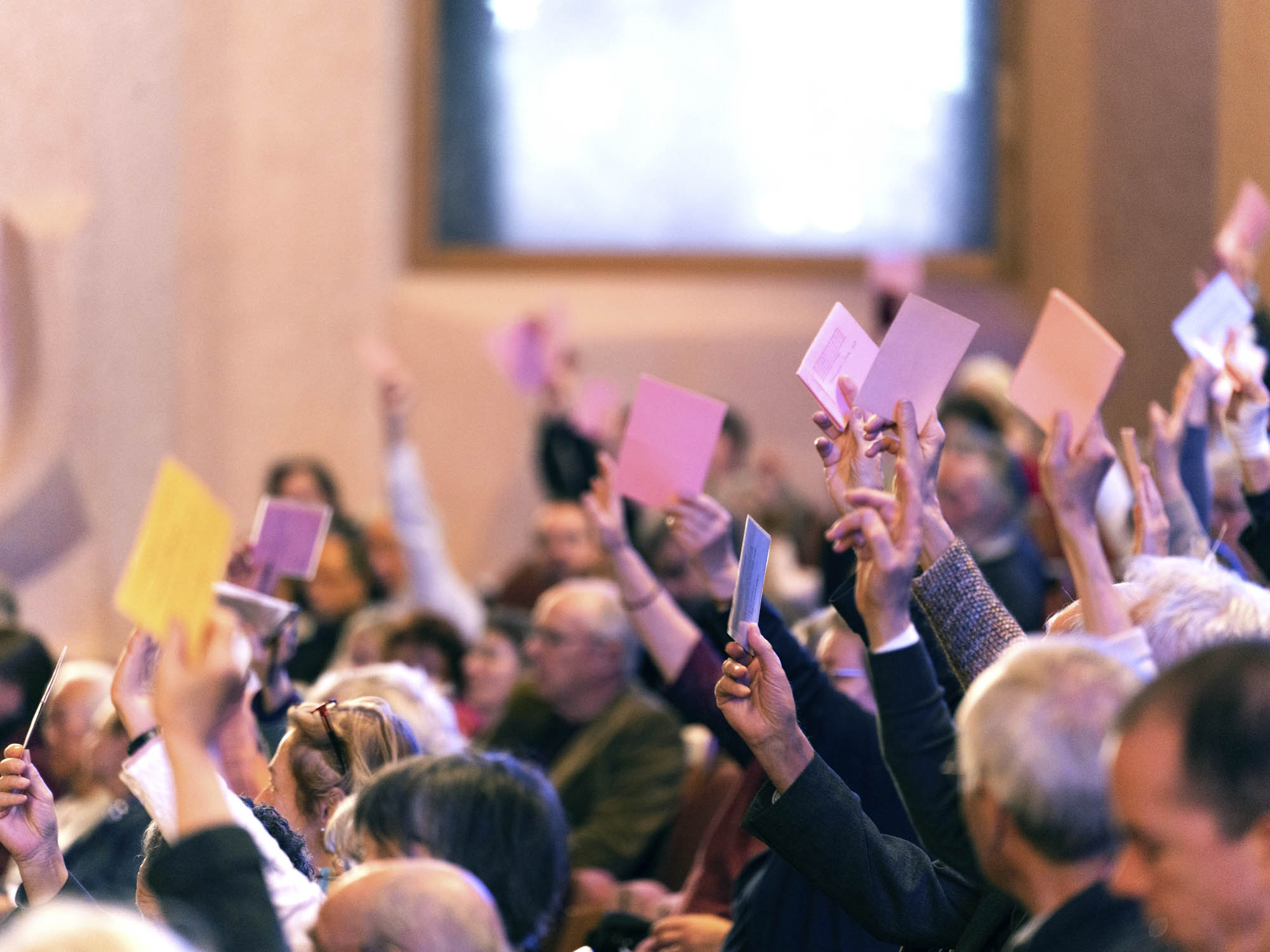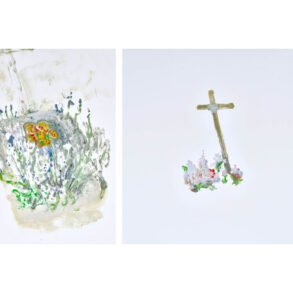The gap is widening. The General Assembly of the Anthroposophical Society could be the place where members of the world society share and support initiatives and ideas. Instead, what often takes place is self-referential and obscured by local associations. How can a change come about?
I came to Dornach and Arlesheim in 2003, now 21 years ago, to work as a medical specialist at the Ita Wegman Clinic and in the Medical Section at the Goetheanum. After reading my dissertation on the “Logos of Human Physis: The Unfolding of an Anthroposophical Human Physiology in the Work of Rudolf Steiner,” Michaela Glöckler asked me to come to continue my studies and publications, but also to pursue work at the Goetheanum as a research assistant. This I did, in the Rudolf Steiner Archive with the active support of Walter Kugler, who opened the door for me and also allowed me to read Rudolf Steiner’s more than 600 notebooks. I also learnt about the nature of the Medical Section and its cosmopolitan work, its worldwide collaborators in research, teaching, training, and the practice of Anthroposophic Medicine.
How much has been achieved in one hundred years from the smallest of beginnings! And what challenges remain in the difficult disputes about medicine and society in the 21st century! I also became familiar with what it means to find qualified staff for leadership positions in the ongoing life of a Section and how intensive work is done when changes come. The Goetheanum by no means just replicates itself when leadership tasks are to be assigned, but rather it perceives the overall situation and the human beings now incarnated from out of the contextual perspective. I have also experienced such a process over the years in the national societies of the Anthroposophical Society; they search all around in their respective countries to see which talented, competent, and socially capable people are suitable for taking on the difficult tasks of the future, and also for the tasks of the Society that arise at the Goetheanum. Dialogue about this has been going on for many years. The time of hierarchical-directive “co-optations” is long gone. Suggestions are now gratefully considered: who, as an individual, is in a position to know the world society and the worldwide staff of the Sections?
Developmental Forms of the Anthroposophical Society
To constitute a new advisory board of the Anthroposophical Society on matters relating to Weleda, a professionally qualified group, with foresight and expertise, was presented at the General Assembly 2024, from out of the initiative of a committed group. Contributions from various national societies showed how intensively the issues concerning the Society and School of Spiritual Science are being worked on in many places, including support for the Goetheanum, as Marc Desaules explained using the example of the Goetheanum Fund from the circle of national societies. For four days prior to the General Assembly, from morning till evening, the national representatives of thirty national societies discussed the situation and tasks in their countries and for the Goetheanum and then stayed for the assembly.
Questioning the international interest and competence in factual matters of the Anthroposophical Society and its history, as was again occasionally heard at the General Assembly (with an argument of low online ratings for such an assembly), is not only hurtful but completely misses the reality. There are many dialogues and relationships between members of the Society worldwide, and by no means just locally in Dornach, and there are empowered and knowledgeable human beings taking part. International Zoom forums will also begin soon. The Goetheanum’s archivist of many years, Uwe Werner, spoke impressively about the right of all members to be involved in the decision-making processes of the Anthroposophical Society, not just those present locally; he spoke about how Rudolf Steiner also organised the Christmas Conference as an international conference of delegates, thereby ensuring that the voices of people from all national societies are heard. At the 1923/24 Christmas Conference, Rudolf Steiner had fifteen country reports presented in the morning and met with the country representatives. He spoke of the “really great, dedicated, multifaceted work” that was being done everywhere. I’ve been able to attend annual conferences of various national societies in recent years and have been in dialogue with many international members. The insinuation that the Goetheanum pursues a purely internal perspective on questions of the past and future (at the gates of the “moon” and “sun”) and is not in exchange with the membership does not correspond to reality, either at the Society or School level. In fact, the exchange is intensive and by no means only within and between internal committees.
The Collaborative Responsibility
Nevertheless, everything must be intensified considerably in the coming years in terms of cosmopolitan, social, and spiritual orientation if the anthroposophical movement, its institutions, its societal organisation, and the School of Spiritual Science are to assert themselves and make their mark in this world at the brink of abyss. How can it be that the General Assembly is not the place where important questions about the future are discussed in this context? How can the Society correct the deformed public image of anthroposophy; how can it support ailing anthroposophical institutions; how can the presence of anthroposophy be strengthened? And how can the Society succeed in publicising important work carried out within its own circles and making it known to the public, both internally and externally? We should discuss this and come to agreements as a Society in order to “finally become capable of working,” as Rudolf Steiner called it, for the collaborative fulfilment of urgent tasks in this world. 2025 will once again be a very public year for anthroposophy—the hundredth anniversary of Steiner’s death. How is the Anthroposophical Society prepared for this; what is it developing; how is it approaching it? Due to so many motions at the General Assembly this year, there was no mention of this. However, the General Assemblies of a world society that has a will for the future will have to be determined by these and other questions. Then, younger members and members who have taken on responsibility in specialised areas will also make the journey to the assembly with their concerns and initiatives. So many stay away now because they have the impression that the same people are always putting forward motions and taking the floor, ostensibly on behalf of the entire membership, which actually is not interested in this at all and is opposed to it. However, they do not oppose it out of a lack of interest in the fate of the anthroposophical movement in the world—quite the opposite—and certainly not out of a lack of expertise.
Sergei O. Prokofiev and the Principle of Hope
How can General Assemblies become meeting places for a world society in the spirit of the Christmas Conference? The awakening that Rudolf Steiner made possible in 1923/24 moves countless human beings around the world; doing justice to it and continuing it is the fateful task of the Anthroposophical Society. Sergei O. Prokofieff, who died on July 26, 2014, in Dornach, and whose tenth anniversary of death we will commemorate this year in the Foundation Stone Hall, considered the Anthroposophical Society to be one of the most important things Rudolf Steiner founded—indeed, he saw it as his most important task of all, in the sense of what Steiner said in the karma lectures from July 1924 onwards concerning its Michaelic mission. Sergei struggled with this task to the end, in his own profound life’s work and in collaborative realisation through the Society and the School of Spiritual Science. However, as I know from many personal conversations with him, he continued to focus on the future, including the future of the Goetheanum, with its globally active Sections and its esoteric school and schooling path, which underpins the entire specialised work, providing substance and impulse. He would have been delighted that in 2023, more than five hundred people had once again become members of the School of Spiritual Science. He came to me beaming one day when he discovered in the Goetheanum archives that Rudolf Steiner signed thirteen blue cards on March 28, 1925, his third to last day on Earth.
Much has happened since Sergei O. Prokofieff’s death, in the world, in every country, in the anthroposophical world society, in the School of Spiritual Science and its Sections, and in the Goetheanum itself. Sergei stood for the principle of leadership in the Society, for the worldwide connection with human beings, for the principle of responsibility in instruction, research, and training at the School of Spiritual Science, which has nothing to do with ex cathedra and “interpretive dominance.” He stood for the principle of hope.
Literature Peter Selg, The Anthroposophical World Society and Its School for Spiritual Science (Hudson, NY: SteinerBooks, 2024).
Translation Joshua Kelberman
Image General Assembly 2024, Photo Xue Li









